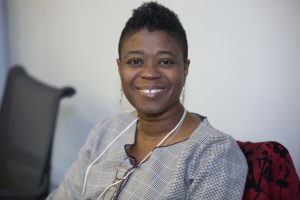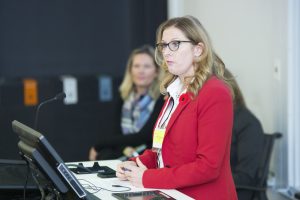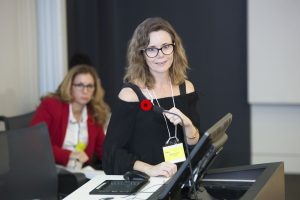Highlights from our Making Connections Conference 2017
Measuring What Matters:
Testing new ways of teaching transferable skills
Speakers:Alison Boehme: Grade 5 teacher, Hamilton DSB Lynn Strangway: Superintendent, Toronto DSB Pamela Crawford: Special Education Resource teacher, Trillium Lakelands DSB Kim Stolys: Grade 1 teacher, York DSB Moderator: Karen Murray, Vice principal at Amesbury Middle School, Toronto DSB |
Overview:People for Education’s Measuring What Matters project is now in its fourth year. Over the past two years, educators across Ontario have been testing out new ways of thinking, teaching and learning about creativity, citizenship, health and social-emotional skills. In this session, some of the participants involved in the field trials will share the innovative ways that they are integrating the Measuring What Matters competencies into their teaching, and the impact it has had their classes. You may be surprised by what they have learned! |
Introduction – Karen Murray
|
 Karen Murray – moderator |
Presentations
Click the panelists names to see notes from their presentations
- Focus: Wanted to give a voice back to her students, so she gave the curriculum documents to her grade 5 students, and asked them how they wanted to learn those expectations
- They became willing to challenge assumptions about norms, and break down traditional barriers
- All of these domains (citizenship, creativity, social-emotional learning, health, quality learning environments) come together. You can’t have one without the other. We use these domains to inspire as well as assess. Give the students the confidence to learn, and they can be amazing.
- Gave her grade 5 students a grade 12 math question. In 45 minutes they were able to figure it out, they taught themselves BEDMAS, exponents, and also the quadratic function. She prompted them with this: “Here is the math question. Tell me everything that you need to know about it.”
- Focus: Wanted a better way to measure self-regulation with students
- She has several stations set up in the morning with different types of activities such as yoga. Students could choose the activity that fit their needs that day.
- She would ask her students where they would put themselves on a sliding scale that had no numbers. She would also put them on a sliding scale. This was an “aha” moment because students are not labelled by numbers, instead they would tell the teacher how they can improve. The scales do not have an endpoint, and thus the student’s perception is more growth-oriented, the conversations with students are more powerful.
- There is tension between what we are accountable to, as well as what we intuitively know is right because we are seeing that this framework is working. This opened a new way to assess the soft skills. She was finally able to prove, using data, that these competencies and framework are making a difference, and can impact soft skills.
- Focus: How can I provide students with windows of opportunities to experience things that they might have never thought of before?
- Selected the creativity domain for her play-based SK/Grade 1 program. Divided the creativity competencies into two categories: one that she thinks they could demonstrate, and one that she thinks that they can demonstrate if she helps them along.
- Asks students if they want to continue what they were working on yesterday, what they did, how they solved a problem today, and how they helped a friend solve a problem today.
- Learned that it didn’t matter which domain she chose, because all domains were affected.
- These competencies gave me the language to describe to others what I wanted to do, what I intuitively knew was right (as P.C. mentioned). The competencies have supported us in giving us some simplicity to this process, a framework.
- Focus: Assessment: How to create the documentation of learning so at the end of the year we know what growth we had, and what we still need to do? (Data from student google surveys is being used too)
- Quantitative accountability became the way, but we owe our educators more. We must allow the students to have the opportunities to try things and fail, so that they can become better. Give the teachers some flexibility to be creative, as long as they can demonstrate it is linked to the curriculum.
- What we give them in schools can be very artificial, we should make it more real, about the world.
 Lynn Strangway |
 Kim Stolys |
 Alison Boehme |
Conclusion
A new way to see what assessment is. It is for students to own their learning. Let’s disrupt how things are now. This is for us to get messy with, take a risk, put the learning in the hands of the students.
Questions from the Audience
- How can students sustain this learning after the school year is over?
- Pamela Crawford: Students “train” their next teachers, and teachers share their enthusiasm with other teachers.
Session videos (part 1 & 2)
